Mid Autumn Festival
Mid-Autumn Moon Festival: 2025 How and When to Celebrate
Mid-Autumn Festival, Zhongqiu Jie (中秋节) in Chinese, is also called the Mooncake Festival or the Moon Festival.
As the second most important festival in China after Chinese New Year, Mid-Autumn is an official public holiday. In 2025, the festival falls on October 6th. People living in Mainland China will enjoy 1-day public holiday.
In China, Mid-Autumn Festival is a reunion time for families, a little like Thanksgiving. Chinese people celebrate it by gathering for dinners, worshiping the moon, lighting paper lanterns, eating moon cakes, etc.
It is also celebrated by many other countries, such as America (mainly in the Asian American community), Singapore, and Malaysia. The date is the same as in China, but there is no public holiday.
Conte
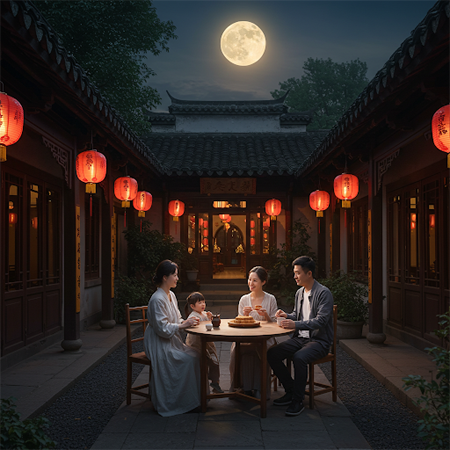
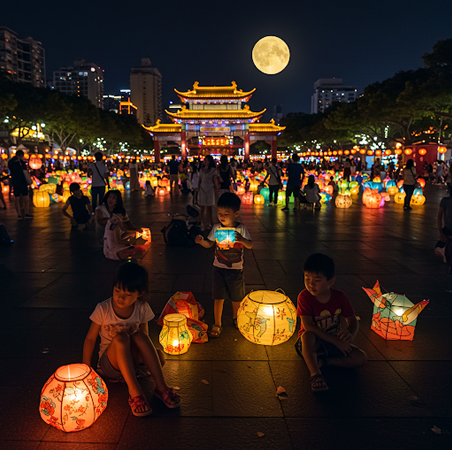
Is Mid-Autumn Festival a Public Holiday?
Mid-Autumn Festival is held on the 15th day of the 8th month of the Chinese calendar, which is in September or early October on the Gregorian calendar.
In the Chinese mainland, people usually have a three-day public holiday for Mid-Autumn Festival.
In Hong Kong and Macau, the day after the Mid-Autumn Festival is a public holiday rather than the festival date itself (unless that date falls on a Sunday, then Monday is also a holiday), because many celebration events are held at night.
In Singapore and Malaysia, the Mooncake Festival is not a public holiday officially. If you want to know more details about the date of Mid-Autumn Festival, click Mid-Autumn Festival 2025
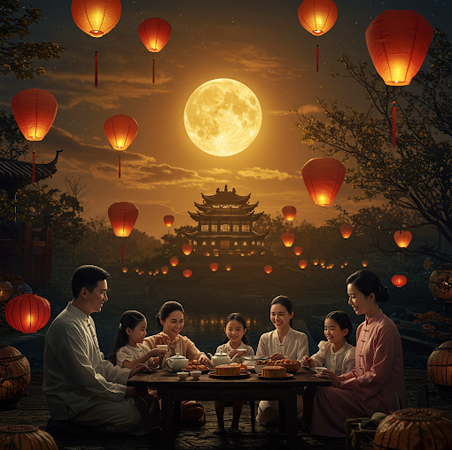
Why Mid-Autumn Festival is Celebrated?
The Mid-Autumn Festival has a history of over 3,000 years. It was a royal sacrificial ceremony associated with moon worshiping and agricultural activities. People worshiped the moon to give thanks for the harvest and to encourage the “harvest-giving light” to return in the coming year. The changes in the lunar phases provided guidance for the farming schedule; therefore, people believed that worshiping the moon could bring a good harvest.
In modern times, most people have sufficient food supplies, but the Mid-Autumn Festival is still significant because the full moon during the festival is a symbol of family reunions. As the festival evolved over time, it has gained additional meanings and now includes prayers for good health and happiness.
You might want to read more on Mid-Autumn Festival Origins or 10 Interesting Mid-Autumn Facts.
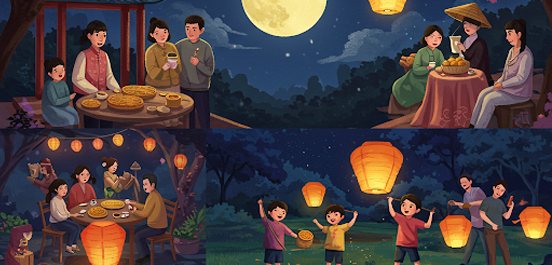
How People Celebrate Mid-Autumn Festival
As the second most important festival in China, Mid-Autumn Festival (Zhongqiu Jie) is celebrated in many traditional ways. Here are some of the most popular traditional celebrations.
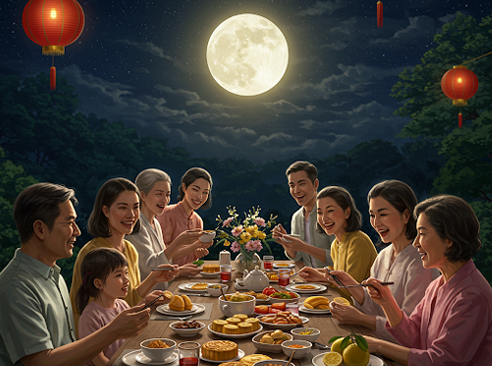
1. Enjoying a Dinner with Family
The roundness of the moon represents the reunion of the family in Chinese minds. Families will have dinner together on the evening of Mid-Autumn Festival.
The public holiday (usually 3 days) is mainly for Chinese people working in different places to have enough time to reunite. Those staying too far away from their parents’ home usually get together with friends.
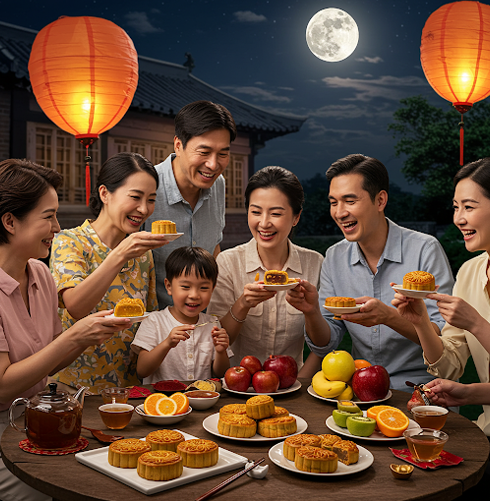
2. Eating Mooncakes
Mooncakes are the must-eat Mid-Autumn food in China. They are a traditional Chinese pastry. Their round shape and sweet flavor symbolize completeness and sweetness.
At the Mid-Autumn Festival, people eat mooncakes together with family, or present mooncakes to relatives or friends, to express their love and best wishes. Mooncakes are usually eaten after dinner while admiring the moon.
Other Mid-Autumn Festival Food:
Celebrating the harvest is one of the most traditional meanings of Mid-Autumn Festival, thus harvest foods are favored during the festive period, such as crabs, pumpkins, pomelos, and grapes. People enjoy them at their freshest, most nutritious time, and enjoy their auspicious meanings that are particularly associated with round foods.
Click to know Mooncakes — Symbols, Flavors, Regional Varieties, and How to Eat Mooncakes.
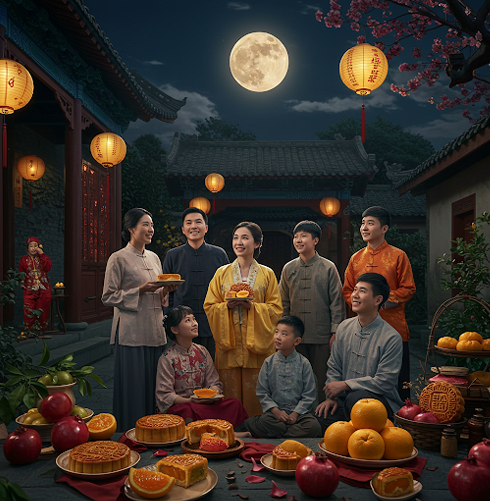
3. Appreciating the Moon
The full moon is the symbol of family reunions in Chinese culture. It is said, sentimentally, that “the moon on the night of Mid-Autumn Festival is the brightest and the most beautiful”.
Chinese people usually set a table outside their houses and sit together to admire the full moon while enjoying tasty mooncakes. Parents with little kids often tell the legend of Chang’e Flying to the Moon. As a game, kids try their best to find the shape of Chang’e on the moon.
There are many Chinese poems praising the beauties of the moon and expressing people’s longing for their friends and families at Mid-Autumn.
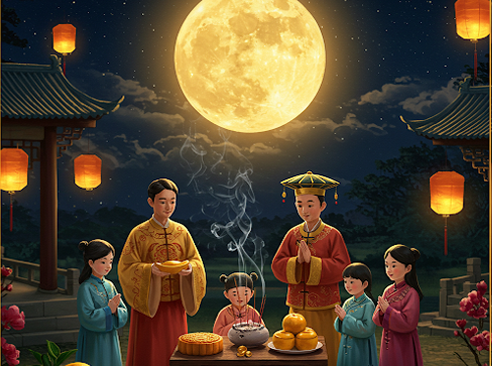
4. Worshiping the Moon
According to the legend of Mid-Autumn Festival, a fairy maiden named Chang’e lives on the moon with a cute rabbit. On the night of the Mid-Autumn Festival, people set a table under the moon with mooncakes, snacks, fruits, and a pair of candles lit on it. Some believe that by worshiping the moon, Chang’e (the moon goddess) may fulfill their wishes.
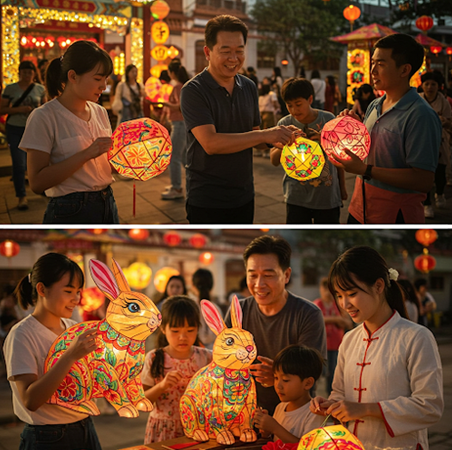
5. Making and Carrying Mid-Autumn Festival Lanterns
Lanterns are a notable part of Mid-Autumn Festival. People make lanterns, carry lanterns to do moon gazing, hang lanterns in trees or houses, release sky lanterns, or visit public lantern displays, hence it is even be known as a lantern festival (not to be confused with the Lantern Festival on the full moon after Chinese New Year).
Lanterns have long been associated with the festival since the Tang Dynasty (618–907), possibly because of their traditional symbolization of luck, light, and familial togetherness.
Mid-Autumn lanterns have many shapes and can resemble animals, plants, or flowers. A tradition is to write riddles on lanterns so that people can enjoy solving them with friends or family.
Here are two interesting lantern riddles for you to guess and share with your friends or family.
- Two people stand face-to-face, dressed alike and with identical faces. One speaks loud and clear, the other is mute without a voice to hear. (Guess an object for daily use.)
- Brothers so cordial, sit side by side. In their youth, they wear green garments, but as they age, they will flaunt yellow clothes. (Guess a type of fruit.)
In modern times, besides traditional activities, many Chinese people send WeChat red envelopes and/or go traveling during the 3-day public holiday to celebrate the festival.
Check out more on 9 Best Places to Celebrate the Mid-Autumn Festival in China.
